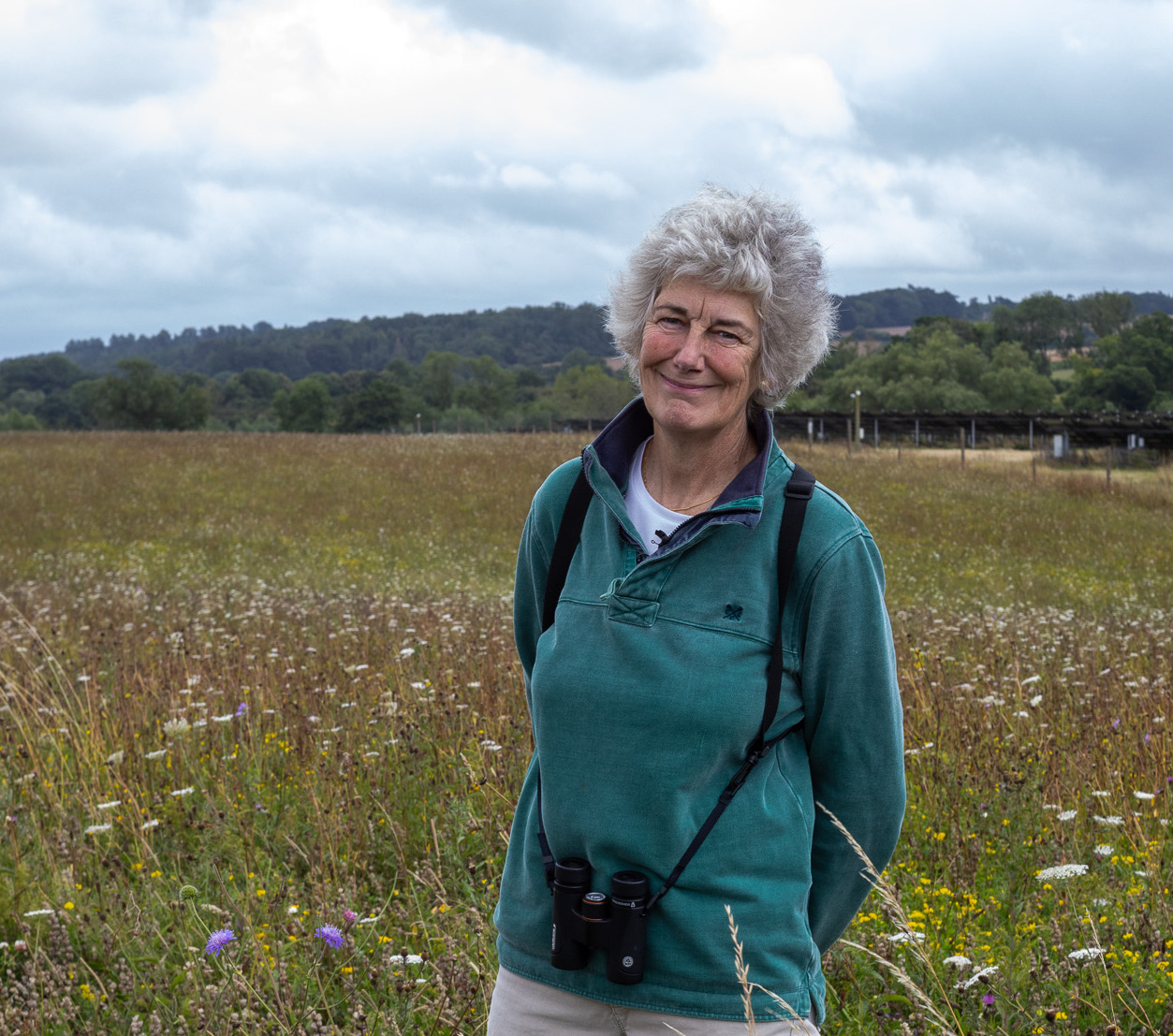
FIRST HAND CASE STUDY: Bespoke Limestone Grassland mix, Cotswold Wild Flora Meadow Mix with Anne Miller


Farm Type: Solar Farm and Wildflower Meadow
Location: Charlbury, Oxfordshire
Size: 40 acres
Soil Type: Cotswold Brash
Mixes Used: Bespoke Limestone Grassland mix, Tussocky grass margin and Cotswold Wild Flora meadow mix
Bespoke Limestone Grassland mix, Cotswold Wild Flora Meadow Mix with Anne MillerSouthill Solar Farm is an innovative community project designed to make a small town carbon zero in terms of energy consumption and creating a wildflower meadow with a bespoke limestone grassland mix is a vital part of the environmentally-focused project.
Southill Solar Farm is a community owned solar farm on the Cornbury Estate on the outskirts of Charlbury, in Oxfordshire. In 2013, a group of passionate locals approached the Cornbury Estate who farm the area. They were very supportive of their idea of creating the town’s own solar farm. After two years of negotiations with the planners and Cotswold Living Landscapes, plans were approved to create a landscaped 4.5mw solar farm, enough to provide energy for the whole town.
Construction on the panels began in September 2016 and by November that same year they were generating power. The energy is sold to the grid to power the town. Anyone in Charlbury could own shares and it also supports a community fund which enables various projects under the banner, Sustainable Charlbury.
One term of the planning permission was that a 25 acre field adjacent to the site, which had previously been sown each year with arable crops, had to be planted to enhance biodiversity. The first priority was maintaining the habitat for the six pairs of resident nesting Skylarks, while also improving the habitat for rare Roman Snails along with a variety of butterflies and other insects found within the site.
‘We worked with Ian Wilkinson and Sam Lane from Cotswold Seeds, who offered guidance, expertise and suggestions of various seed mixes to enhance the habitat for pollinators, reptiles and amphibians’ says Anne Miller, an ecologist who oversees the site. ‘We’re not farmers, so we relied on support from local contractors, farmers and volunteers. Initially, we experimented with sowing plots and mixes of annual plant species like Sunflowers and Millet to produce seed for farmland birds over the winter. However, the wild bird mix did not prove practical because we had to reside each year and we wanted a longer term sustainable solution.’
The classic Cotswold Wild Flora mix features a variety of wildflower species and traditional grasses that suit the soil type, including Field Scabious, Knapweed, Birdsfoot Trefoil, Oxeye Daisy, Wild Carrot, Ladys Bedstraw and Yellow Rattle. It also included adding some brush harvested seeds from an existing nearby old meadow in order to add some local provenance flora to the mix.
‘The first year it was full of beautiful Cornflowers and Corn Cockle,’ remembers Anne. ‘We’ve lost most of the annuals now but perennials like Wild Carrot and Birdsfoot Trefoil, Knapweed and the Scabious have done really well. You get waves of colours as the different flowers come out, meaning different pollinators are being supported throughout the season. It’s awash with butterflies - Meadow Browns, Marbled Whites and Peacocks. The meadow became a feast of Yellow Rattle in late spring and we are able to share these seeds with people to use in gardens and along the local roadside verges.’
Wildlife enhancement around the solar panels was a challenge. ‘The land had obviously been very disturbed during the construction of the panels, leading to some weeds germinating which had laid dormant, deep in the soil for many years. It was difficult to get in and around the panels to sow the grass seed compared to the open field site’ says Anne.
Ideally the panels would have been higher, spaced wider and angled to encourage more wildflowers and grass growth but planning consent constrained this. So Cotswold Seeds developed a special low growing, species rich, grass only mix to grow around and under the panels, to establish a dense sward on the brash. This included traditional grasses like Smaller Catstail, Dogstail and Creeping Red Fescue.
‘It took a while to get established and plants like Creeping Thistle and Ragwort took hold and brambles interfere with the solar panels in some areas,’ says Anne.
After a while the grass became well established and there are plans to introduce grazing sheep around the panels to manage it in the future.
Meanwhile, the wildflower meadow is left to flower each year for insects and nesting Skylarks until the end of August, when a hay crop is taken. Six metre margins of a tussocky grassland mix have also been allowed to spread. This mix includes more upright species like Cocksfoot and Tall Fescue. More structural grass species allows a place to overwinter and resources for the local wildlife.
Discover more about Cotswold Wild Flora
Date Posted: 30th July 2024


